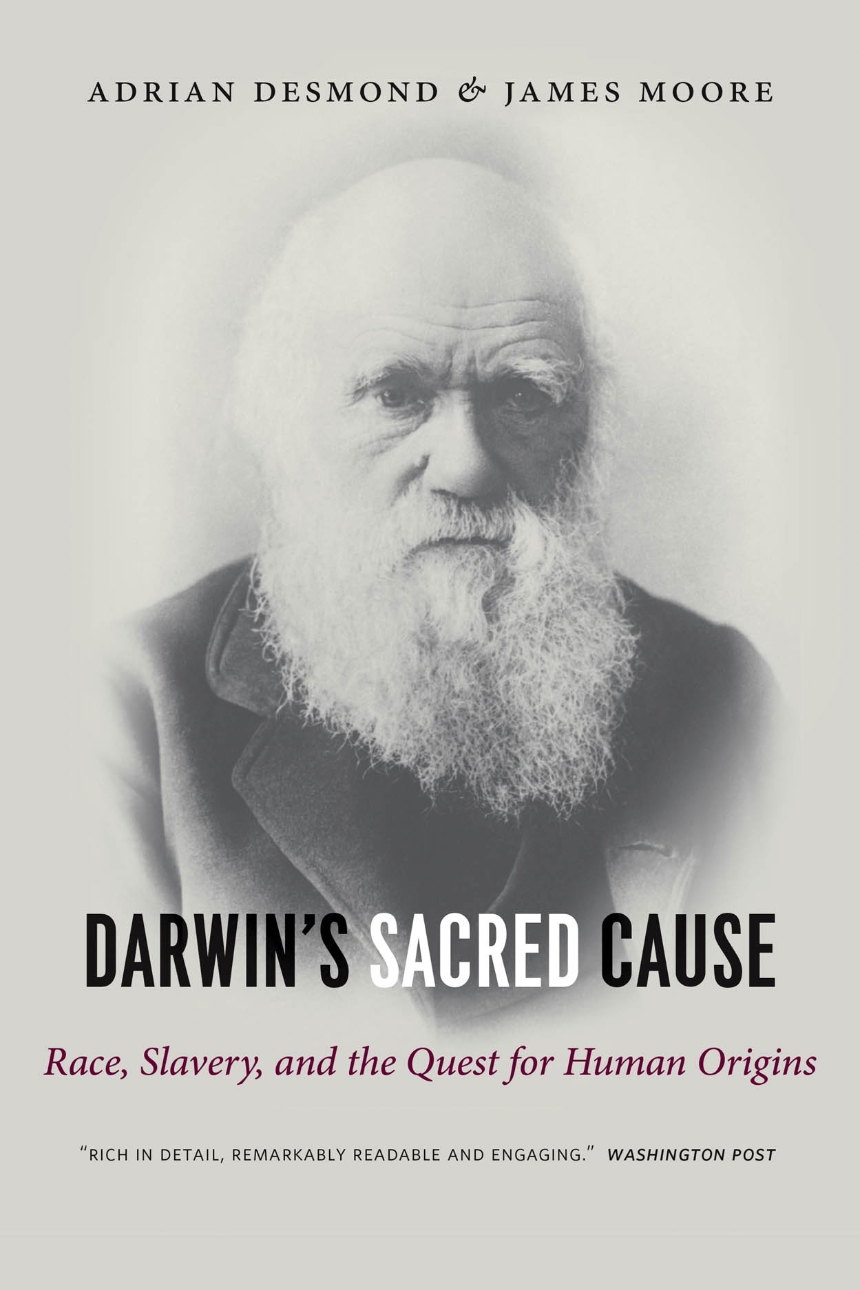Darwin’s Sacred Cause
Race, Slavery and the Quest for Human Origins
There has always been a mystery surrounding Darwin: How did this quiet, respectable gentleman come to beget one of the most radical ideas in the history of human thought? It is difficult to overstate what Darwin was risking in publishing his theory of evolution. So it must have been something very powerful—a moral fire, as Desmond and Moore put it—that helped propel him. That moral fire, they argue, was a passionate hatred of slavery.
In opposition to the apologists for slavery who argued that blacks and whites had originated as separate species, Darwin believed the races belonged to the same human family. Slavery was a “sin,” and abolishing it became his “sacred cause.” By extending the abolitionists’ idea of human brotherhood to all life, Darwin developed our modern view of evolution.
Drawing on a wealth of fresh manuscripts, family letters, diaries, and even ships’ logs, Desmond and Moore argue that only by acknowledging Darwin’s abolitionist heritage can we fully understand the development of his groundbreaking ideas.
Table of Contents
Acknowledgments
Introduction: Unshackling Creation
2. Racial Numb-Skulls
3. All Nations of One Blood
4. Living in Slave Countries
5. Common Descent: From the Father of Man to the Father of All Mammals
6. Hybridizing Humans
7. This Odious Deadly Subject
8. Domestic Animals and Domestic Institutions
9. Oh for Shame Agassiz!
10. The Contamination of Negro Blood
11. The Secret Science Drifts from Its Sacred Cause
12. Cannibals and the Confederacy in London
13. The Descent of the Races
Notes
Bibliography
Index
